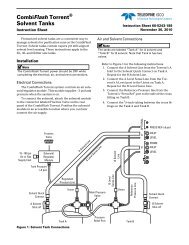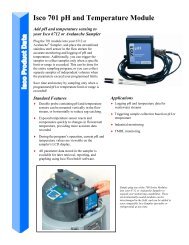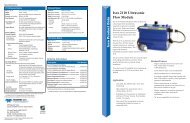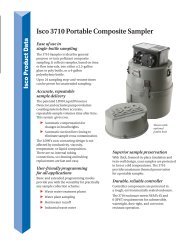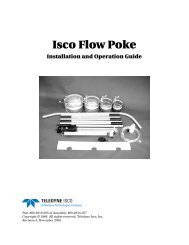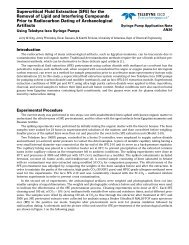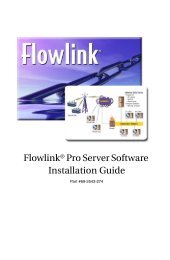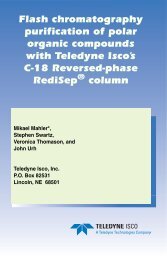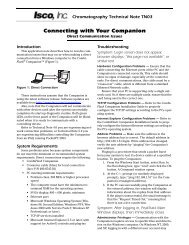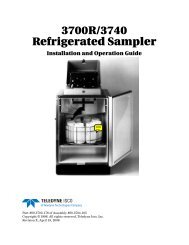Retriever IV Fraction Collector User Manual - Isco
Retriever IV Fraction Collector User Manual - Isco
Retriever IV Fraction Collector User Manual - Isco
You also want an ePaper? Increase the reach of your titles
YUMPU automatically turns print PDFs into web optimized ePapers that Google loves.
<strong>Retriever</strong> <strong>IV</strong> <strong>Fraction</strong> <strong>Collector</strong>Section 4 Theory of OperationCAUTIONRisk of electric shock. Disconnect the electric power beforeservicing. Only trained service personnel may remove theoverflow tray or transformer cover.4.1 Circuit Descriptions Refer to the block diagram in Figure 4-1 and the schematic(available online) as needed when following the circuit descriptions.To view the schematic drawings for the <strong>Retriever</strong> <strong>IV</strong>, first findthe serial number for your unit. Then go to our Web site atwww.isco.com. Select Training and Support and then ProductSupport. Click on Liquid Chromatography Products and thenselect Schematics in the left margin. After you enter your serialnumber, you will be able to view the schematics online. If youneed any assistance, or don’t see the correct schematic for yourspecific unit, contact our service department.The power supply consists of an external transformer, afull-wave bridge rectifier, and an IC voltage regulator. Theoutputs supplied are a fused, filtered +16 V, regulated +12 V and+5V, and a frequency reference.The time base for the controller is derived by counting down theAC line frequency from the power supply (+18.9 V peak, halfsine) to the squaring amplifier (U112A) via a low pass RC filter.This squaring amplifier is an AND gate Schmitt trigger whichchanges the sine wave input to a square wave clock output. Thisclock signal is applied to the BCD counters of the time base(U110A, B, U111A). U110A, in turn, divides the clock signal byeither 5 or 6, depending on the setting of the 50–60 Hz jumper, toobtain a 10 Hz clock signal. The 10 Hz signal is then divided by10 in U110B, which obtains a 1 Hz signal for the delay timer. The1 Hz signal is divided by 6 (U111A) to produce a 0.167 Hz (10pulses/min) signal which is one of the two selectable inputs to thetime, volume, and drop control, U106 and S103. The other inputsource for the time, volume, and drop control is the externalcount input. In the case of the count input, the signal can beaccepted in one of three forms: drop sensor, open collector, orcontact closure. The drop sensor is a light emitting diode and aphoto transistor.They are placed so that falling drops block the light path to thephoto transistor. The photo transistor conductance is directlyproportional to the quantity of light falling on it. The count inputregulator (Q103) holds the current drawn by the photo transistor4-1



